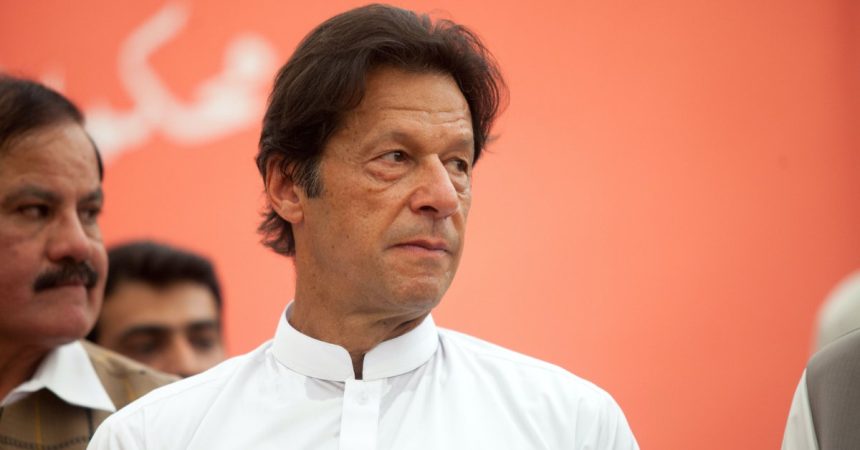HISTORY OF NO-CONFIDENCE MOTION:
Before Imran Khan’s removal from power, let’s go through the history of the no-confidence motion. The House of Commons No Confidence Motion (NCM) in Robert Walpole’s ministry in 1742 was the first time a British prime minister resigned following a vote of no confidence. Although this was not an official office until the early twentieth century, Walpole is considered the first British prime minister. He had been in power since April 1721 and relied on the King’s Parliament’s support to keep his ministry running.
Walpole addressed the House of Commons in 1739 that the cabinet should be answerable to Parliament. The government’s support in the House of Commons rapidly dwindled in the years that followed. In January 1742, the government filed a petition against the re-election of two Members of Parliament from Chippenham in previous by-elections. On January 28, the petition was defeated in the House of Commons by a vote of 235 to 236.
READ MORE: US President Joe Biden has indicated if Taiwan is attacked, the US will safeguard it.
A motion of no confidence, also known as a censure motion, is a resolution introduced in the House of Commons that states: “That this House has no confidence in HM Government.” It denotes that the government has lost the backing of the House of Commons (the legislature), without which it cannot function properly.
Prof Richard Toye explains the no-confidence motion as: “The basic principle is this: the government of a country has to have the confidence of the House of Commons. If the government has lost its majority or does not have a reliable majority, that is the cue for either the government to fall and be replaced or for a general election to be called.
“The government then has a fixed period – 14 days – to win a vote of confidence or to call a general election. This is a period of political maneuvering in which the governing party tries to prove that it can carry on and the Opposition tries to supplant it.”
FIRST NO-CONFIDENCE MOTION IN PAKISTAN
Muhammad Khan Junejo was the country’s first prime minister to obtain a vote of confidence from the National Assembly, which he received on March 24, 1985, as part of General Zia-ul-Revival Haq’s Constitution of 1973 Order (RCO). The president chooses the prime minister at their discretion under the RCO, and the prime minister must secure a vote of confidence from the National Assembly within 60 days after their appointment.
From 1985 until 2008, all prime ministers of Pakistan got a vote of confidence from the National Assembly under the Eighth Amendment to the Constitution. The late Benazir Bhutto, Mian Muhammad Nawaz Sharif, Mir Zafarullah Jamali, Chaudhry Shujaat, Shaukat Aziz, and Yousuf Raza Gilani were among them.
NO CONFIDENCE MOTION AGAINST IMRAN KHAN
Opposition parties presented a resolution in the National Assembly on March 8, 2022, requesting Khan’s removal from power, charging his purported hybrid government with bad administration, political victimization of opponents, and mismanagement of the economy and foreign policy. These elements are said to have led to Khan’s split with Pakistan’s military establishment, which had been a staunch supporter of his government. Imran Khan claimed to have a diplomatic cable dated March 7 in which the US administration issued a “threat” to remove Khan from office, with the caveat that Pakistan would be “forgiven” if the motion against him was successful.
A no-confidence motion against Imran Khan resulted in his ouster as Pakistan’s prime minister in April 2022. Under clause (2A) of Article 91 of the Constitution, the prime minister commands the majority of the lower house of Parliament, the National Assembly of Pakistan, which is based primarily on the Westminster form of legislation. Several opposition parties banded together in the National Assembly to launch a resolution of no confidence against Imran Khan.
IMRAN KHAN AND PTI’S REACTION TO NCM
Khan and his administration claimed that the US government threatened Pakistan with ‘consequences’ if the motion of no-confidence failed and Khan remained in power and that if Khan was removed, ‘everything would be forgiven.’ “Do you believe you have diminished or exacerbated anti-American sentiment in Pakistan by partaking in a regime change plot to remove a democratically elected PM of a country of over 220 million people to install a puppet PM?” Khan challenged US President Joe Biden after he was dismissed from office. Khan alleged that Pakistan Muslim League (N) leaders Nawaz Sharif and Shehbaz Sharif, as well as Pakistan People’s Party President Asif Ali Zardari, were all involved in the plot.
It was based on a diplomatic cable issued by Pakistan’s ambassador to the United States, Asad Majeed Khan, during a meeting with Donald Lu of the US State Department in early March. “There is simply no truth to that accusation,” White House Communications Director Kate Bedingfield reacted to Khan’s claim of a plot.
When Khan met with Russian President Vladimir Putin in Moscow on the day of the Russian invasion of Ukraine, the US government was said to be unhappy. In the face of international condemnation, Khan replied at a public gathering by asking, “Are we your slaves that we would do everything you say?” and charging hypocrisy because the same criticism was not directed at India, which had also refused to denounce Russia’s incursion. Qasim Khan Suri, the Deputy Speaker of the National Assembly, would use this rationale to dismiss the vote of no confidence unilaterally.
While the contents of the cable contained “undiplomatic language,” Pakistan’s military was divided on whether there had been a foreign conspiracy.





